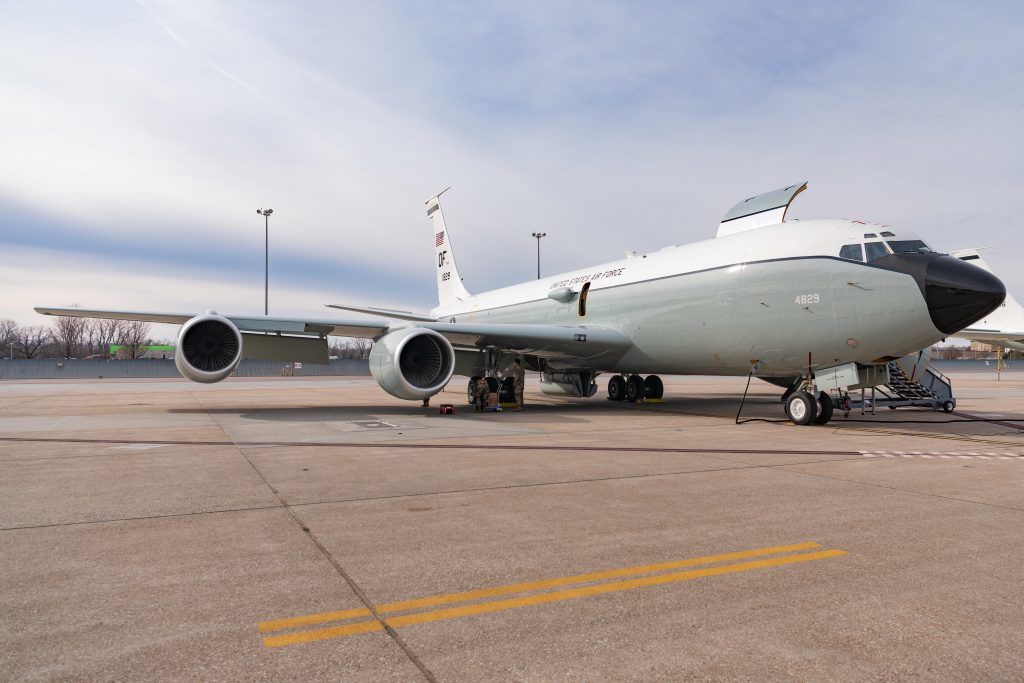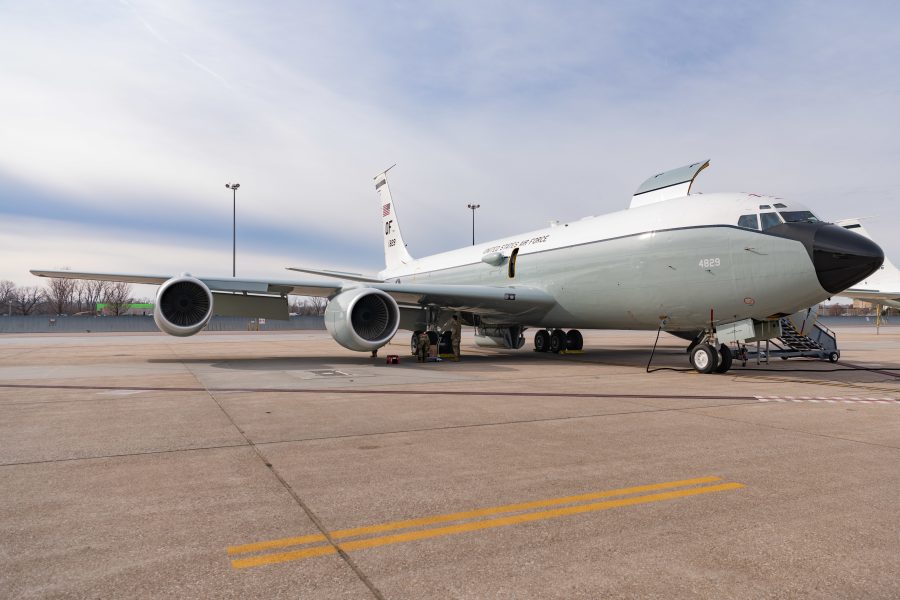The Air Force took delivery on the third and final WC-135R “Nuke Sniffer” aircraft, completing its transition from its two-aircraft WC-135C/W fleet.
The new fanjet aircraft arrived at Offutt Air Force Base, Neb., on Dec. 4.
“Having this third jet really opens up a lot of options for us,” said Col. Mark Howard, 55th Wing commander in a release.
The aircraft sample the air for particles and gases indicating nuclear activities to ensure compliance with the Limited Test Ban Treaty of 1963, a global agreement to restrict nuclear weapons testing. There are few missions like it anywhere else in the U.S. military.
“Most people think of radiation and think ‘avoid it,’” one Constant Phoenix crew member told Air & Space Forces Magazine in May. “With this jet we’re able to go and actually do that safely, which I think is really cool.”

Having three jets rather than two gives Constant Phoenix crew members much more flexibility to take samples in more parts of the world, which is especially important as the number of potential nuclear foes increases.
“For the first time in our nation’s history we have the ability to respond to simultaneous events without mission degradation or diversion of assets.” said Col. James Finlayson, commander of the Air Force Technical Application Center. AFTAC oversees the U.S. Atomic Energy Detection System, which monitors foreign compliance with nuclear testing treaties. The WC-135Rs are flown by the 55th Wing’s 45th Reconnaissance Squadron, while AFTAC provides the special equipment operators who run the airborne sampling equipment.
The “new” WC-135Rs are converted KC-135R aerial refuelers. Their transformation from Stratotankers to nuclear-sniffers began in 2019 at the 645th Aeronautical Systems Group, a maintenance depot best known as ‘Big Safari.’ The third R-model, tail number 64-14829, was initially delivered to the Air Force in 1964 and most recently operated by the Arizona Air National Guard before its makeover.
The new jets feature a brand-new cockpit and CFM-56 turbofan engines, the same as the other two WC-135Rs. The earlier aircraft were dissimilar, so this will make training and maintenance more efficient.
“Having the same engines across the entire fleet is huge for our pilots as well as our maintainers,” Howard said.
The new engines also fix a problem that afflicted the older WC-135W fleet, whose engines went out of production decades ago and often suffered dangerous failures.
The first WC-135R was delivered in July 2022, followed by the second aircraft this May. The 55th Wing retired the first WC-135C/W aircraft in November 2020, and the second one in the fall of 2022.
